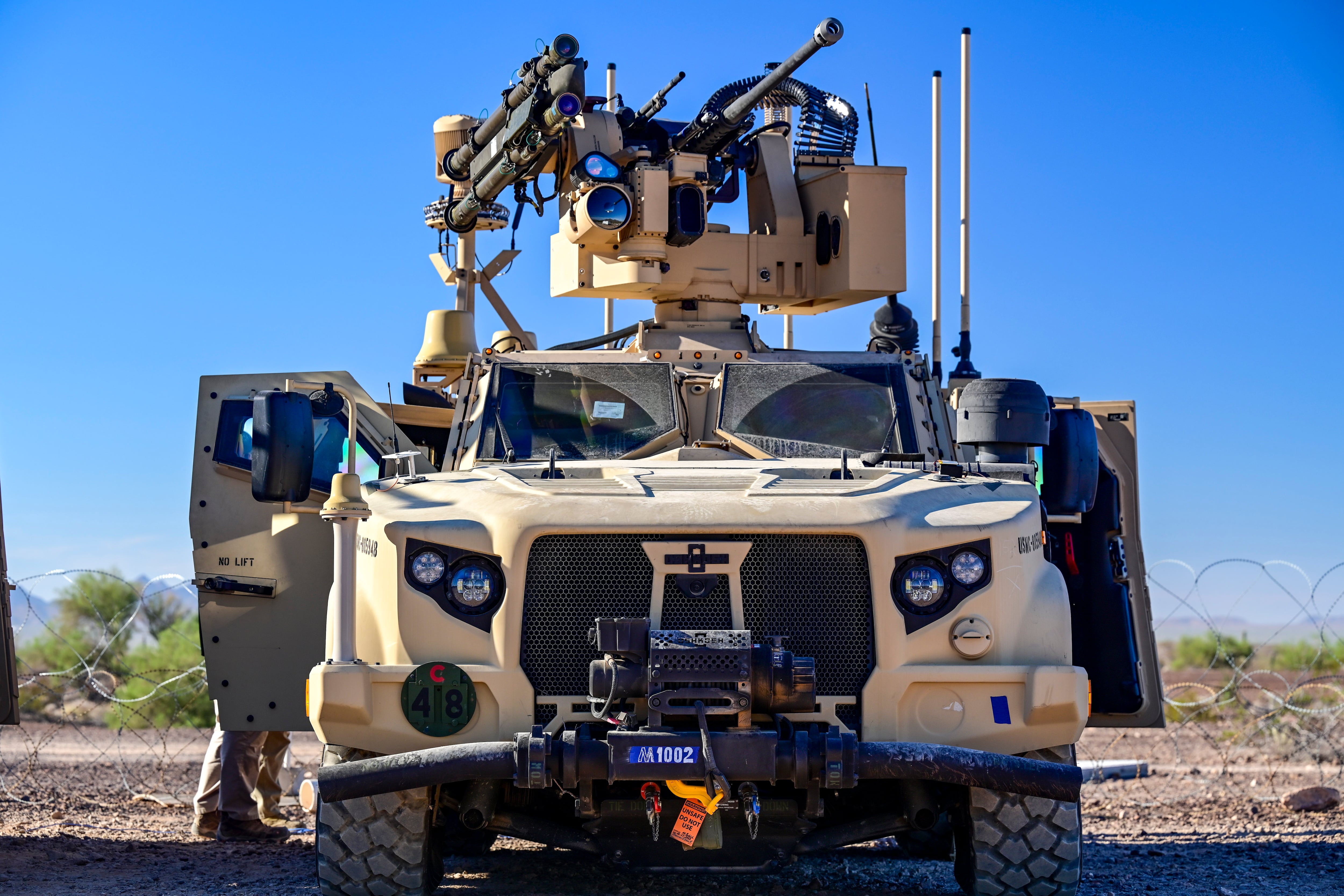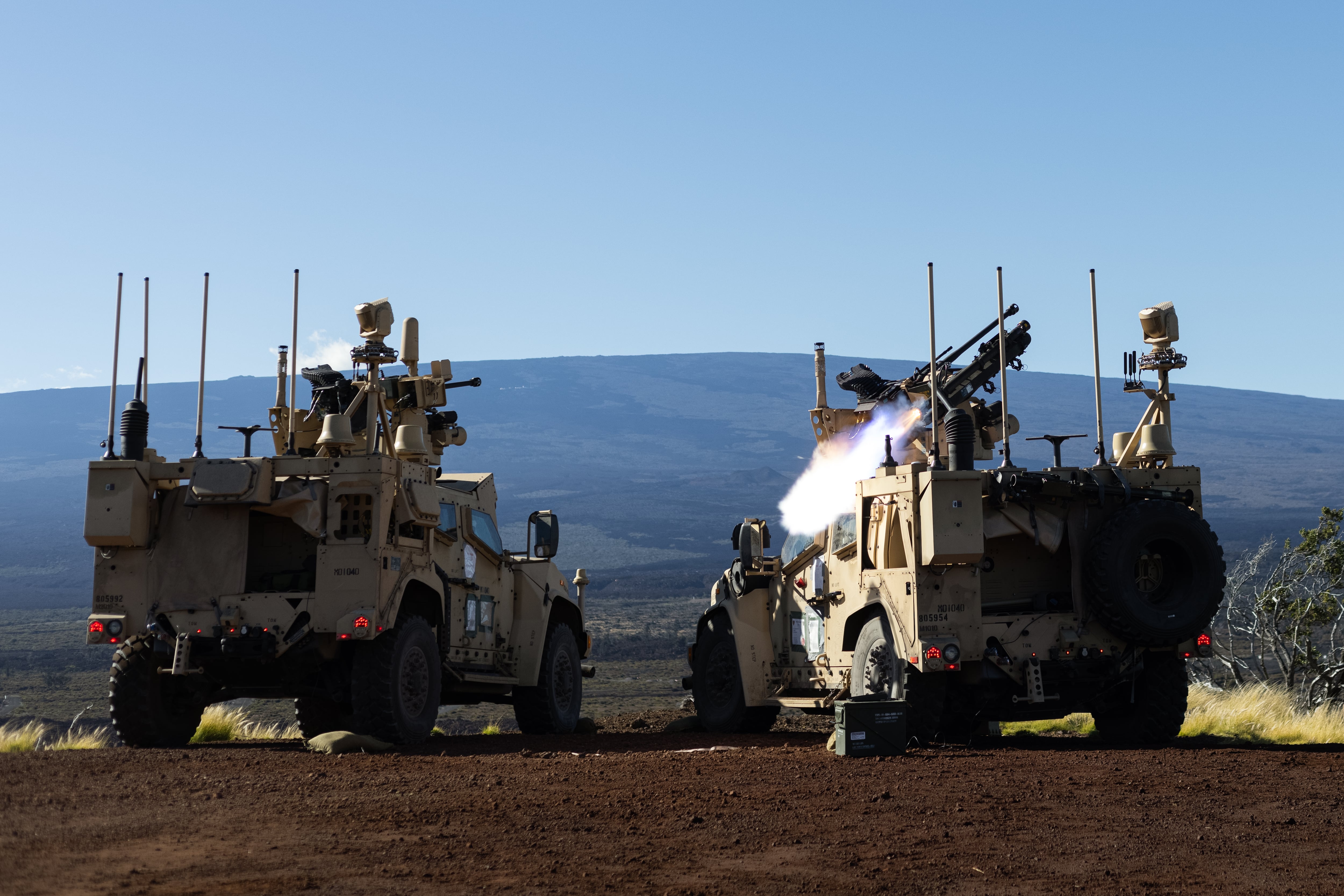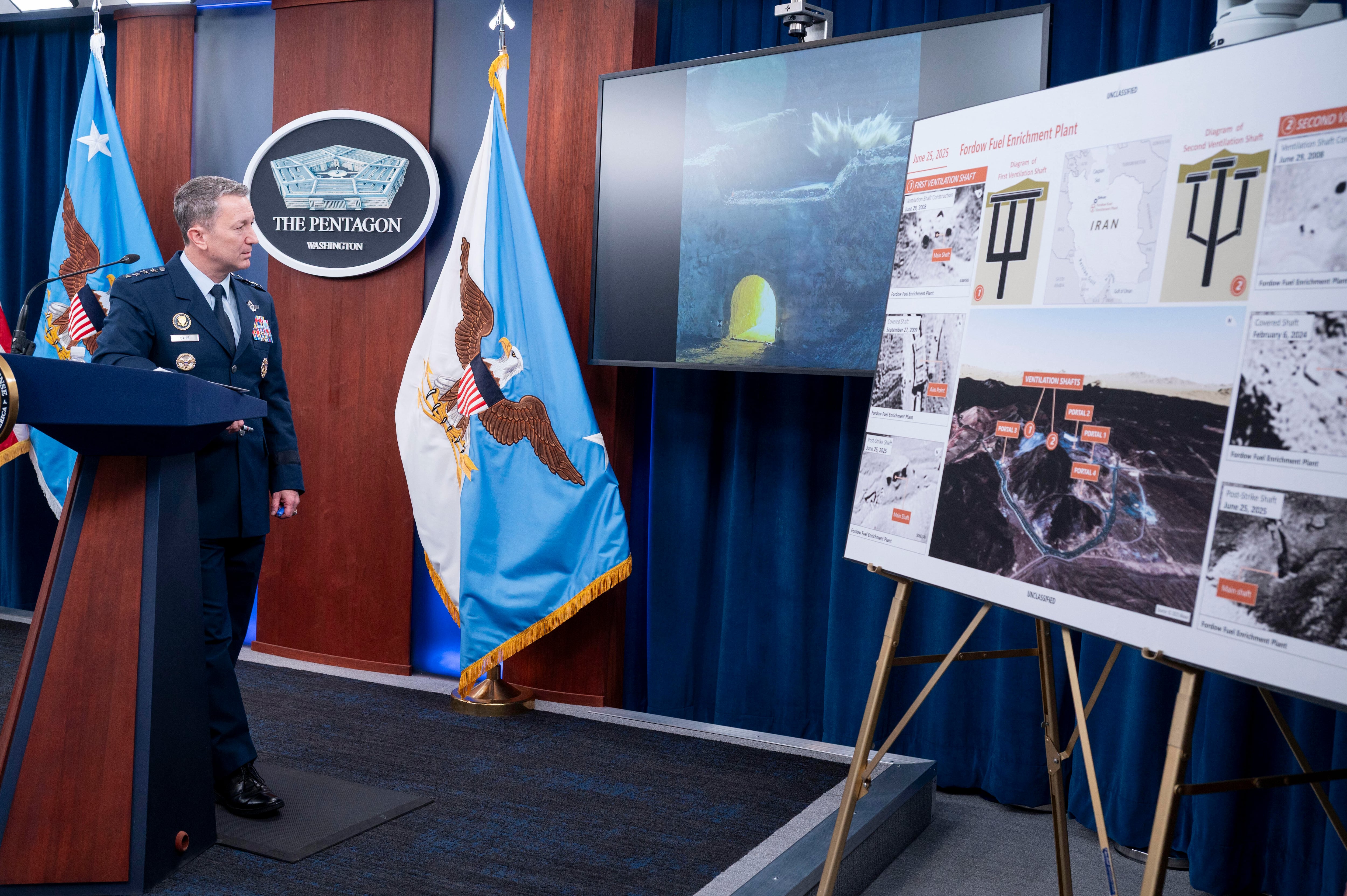U.S. Marines will test one of the service’s newest counter-drone defense systems during this year’s Balikatan military exercise in collaboration with the Philippine military, according to the Marine Corps.
Marines with the 3rd Littoral Anti-Air Battalion’s Ground-Based Air Defense Battery will conduct live-fire training with the ground-based Marine Air Defense Integrated System, or MADIS, a short-range, surface-to-air system that specializes in the detection and destruction of unmanned aircraft systems, at the annual joint drills currently underway in the Philippines.
The exercise will mark MADIS’ second live-fire training, following training in January at the Pohakuloa Training Area on the Big Island of Hawaii, and the first time the system has been deployed outside the United States with a U.S. Marine Corps unit.
“The MADIS is a unique weapon system that enhances both the survivability and lethality of [the 3rd Marine Littoral Regiment] by extending the reach of the airspace over which the formation has control, and by giving tactical flexibility to the friendly elements operating within our area of operations,” said Col. John G. Lehane, commanding officer of the 3rd Marine Littoral Regiment, in a release.
During an integrated air and missile defense event, U.S. Marines will perform a demonstration of the MADIS alongside Philippine Marines and soldiers, who will also utilize their own counter-drone systems.
With MADIS, Marines don’t have to exit their vehicle to manually target and take out an unmanned aerial vehicle.
The system, mounted to a tactical vehicle, comes equipped with radar and weapons capable of identifying aerial threats and neutralizing them out of the sky with jammers, Stinger missiles and a 30mm cannon.
RELATED

MADIS will replace a previous aerial defense system called the Man-Portable Air Defense System, or MANPADs, which includes a fire unit vehicle, section leader vehicle and a Stinger shoulder-fired missile as its primary weapon system, according to the Marine Corps.
The Marine Corps — which requested $130 million for 13 MADIS Increment 1 systems in its fiscal 2024 budget request — will seek to field 190 MADIS systems through 2035 to the 1st, 2nd and 3rd Low-Altitude Air Defense Battalions and the 3rd, 4th and 12th Marine Littoral Regiments.
This year’s Balikatan, running through May 9 on the Philippine islands of Luzon and Palawan, marks 40 years of joint drills aimed at fortifying the Indo-Pacific. U.S. and Philippine troops will conduct coordinated military operations across land, sea, air, space and cyber domains for the exercise.
The I Marine Expeditionary Force Command Element, 1st Marine Division, 3rd Marine Aircraft Wing, 1st Marine Logistics Group, 3rd Marine Littoral Regiment and 1st Marine Aircraft Wing will participate in the event.
“The MADIS continues to exceed expectations, and the more repetitions we get to integrate it with the [Philippine Marine Corps] in training, the more it will enhance our collective lethality,” said Lt. Col. Matthew E. Sladek, commanding officer of the 3rd Littoral Anti-Air Battalion.
Riley Ceder is a reporter at Military Times, where he covers breaking news, criminal justice, investigations, and cyber. He previously worked as an investigative practicum student at The Washington Post, where he contributed to the Abused by the Badge investigation.





